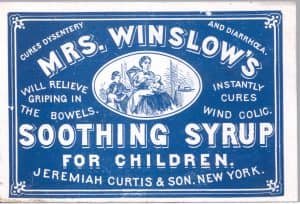America’s First Opioid Epidemic
The time period from the Civil War to the early 20th century represents America’s first opioid epidemic. It is estimated that one out of two hundred Americans had an opiate addiction by the end of the 19th century (Trickey). In some cities, opiates were circulated widely, constituting almost a quarter of all prescriptions, according to pharmacy records (Courtwright 62).
During the Civil War, injury and fatality were, of course, prevalent due to gruesome, large-scale battles. The immense war effort also led soldiers to come in contact with many novel pathogens, kindling widespread outbreaks of numerous diseases, such as measles, smallpox, and typhoid fever (Grafe). Effectively, the Civil War presented an unprecedented public health crisis — the biggest in American history up until this time.
Wounded Civil War soldiers. These soldiers often received opiates to treat their injuries, leading to addiction (DEA Museum 2).
Doctors, poorly trained and lacking the resources to give stellar treatment, readily prescribed opiates through the opium pills, morphine, and laudanum — an opium-alcohol mixture. Opiates were seen as the panacea to the incalculable levels of disease and casualties that were occurring. One primary source — a military medical handbook from the Civil War — described opiates as being as “important to the surgeon as gunpowder to the ordinance” (Chisolm 97). An estimated 10 million opium pills were doled out by the Union Army alone during the war.
Opiates on a children’s medication that was seen as a cure to everything (DEA Museum 2)
Historical Significance of Opiates
Because opiates provided instant relief and were so heavily relied on during the war, tens of thousands of Civil War veterans developed opiate addictions in the years following the war. This was aided by the fact that there were few legal restrictions on opium, meaning that veterans could easily obtain it. At the same time, doctors were impressed by the almost immediate results opium offered, so they prescribed opiates widely in the 19th century (Trickey). Doctors also heavily prescribed opiates to wealthier white women, leading this population to constitute the majority of opiate addicts towards the end of the 19th century. As a result, the opiate epidemic mainly occurred amongst affluent white women and Civil War veterans up until the end of the 19th century. Opiates' greatest historical significance during this period was its health impacts on those who were addicted.
Opiates primarily impacted health in two ways. Firstly, opiates caused physical health issues, primarily through overdoses, that led to serious health complications and deaths. Thousands of overdose deaths occurred between the Civil War and the early 20th century (Gafe). These overdoses occurred because many Civil War veterans consumed opiates so frequently and at such high amounts that overdoses became inevitable. Additionally, long-term opioid use took an immense toll on addicts, “leaving them fatigued, emaciated, impotent, and riddled with ghastly self-inflicted injection scars” (Jones). One Civil War veteran described opium addiction as a state “worse than death itself,” adding that it produces a “terribile irritability of the whole system that none can describe” (Woodley 16). Other health complications caused by addiction included nausea, anorexia, indigestion, and constipation (Hubbard 4-5) .
An image depicting the debilitating results of an addict injecting opiates, taken from Drugs that Enslave. (The Opium, Morphine, Chloral and Hashisch Habits 3)
Secondly, opiates had significant impacts on mental health, according to primary source accounts from the era. A New York Times article from 1911 commented on these consequences:
“Our prisons and our hospitals are full of victims of it (opiates), it has robbed ten thousand business men of moral sense and made them beasts who prey upon their fellows, unidentified it has become one of the most fertile causes of unhappiness and sin in the United States, if not the cause which can be charged with more of both than any other (Marshall 4)”.
Another New York Times article from this period stated that opiates led to a “suspension of the will” and “brought its subject down to hopeless imbecility” (“Our Fashionable Narcotics”). Opiates deprived users of “health and happiness,” eventually producing “idiocy.” Dependency on these drugs “humiliates opium eaters by a sense of their own weakness” (Hubbard 6). Amongst Civil War veterans, opiates’ psychological effects led many to question their manhood, as they were effectively controlled by something other than their own willpower. This was particularly notable, as masculinity — especially for soldiers — was important in this era, and masculinity was defined by the ability to be independent, stoic, strong, and honorable (Jones). Consequently, these men often were condemned and lost the respect they had gained during the war. This diminished status further damaged their mental health, creating a debilitating cycle between opiate usage and mental health.
It is clear, then, that opiates had a sizable impact on the day-to-day lives of hundreds of thousands of Americans and their families during this time period. This impact is often overlooked, but the serious physical and mental health consequences of opiate addiction show that this impact is significant.


